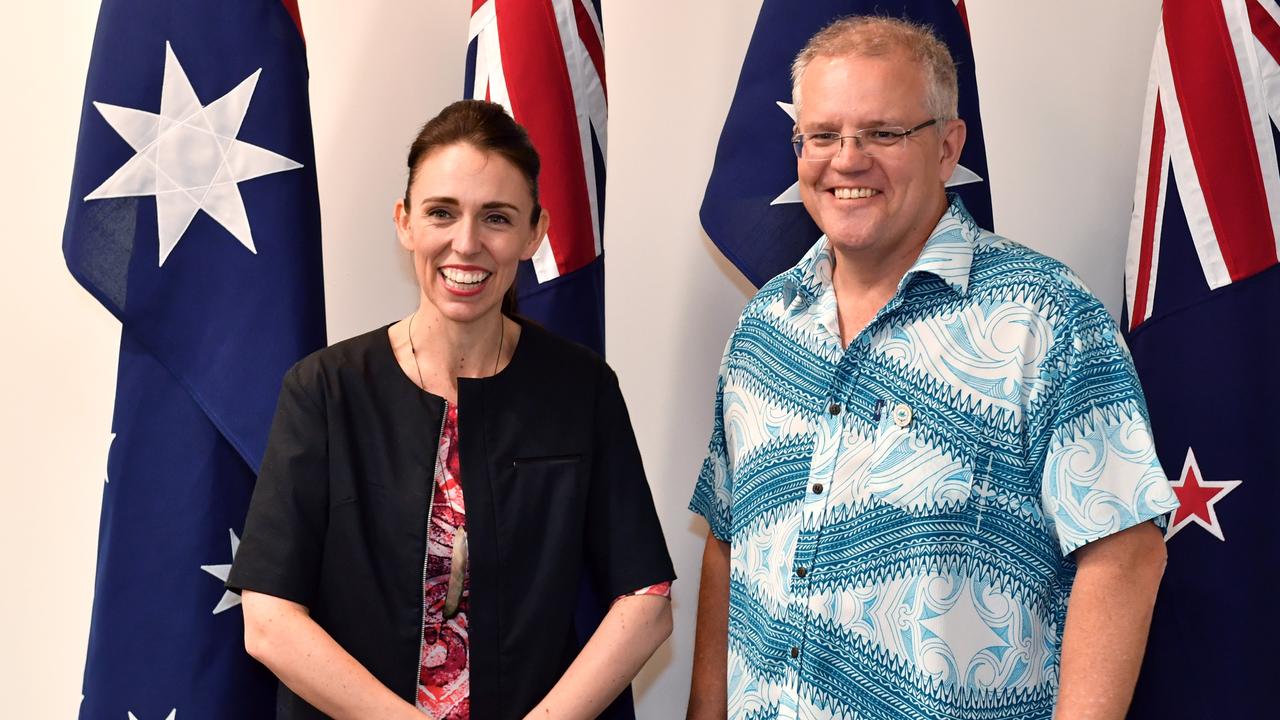Get used to the new normal – booming rates of growth are gone
Treasury has been hanging on to the hope the economy will return to the sunlit uplands of the mid-2000s ever since the global financial crisis struck.
Every budget statement, even in the darkest days of 2008-09, has envisaged economic growth rising to 3 per cent or more. And yet, the average growth rate over the past 10 years has been only 2.6 per cent. On just one occasion, in 2011-12, has the economy’s output risen by more than 3 per cent — mainly due to Queensland flood reconstruction work.
Over the year to December, growth was only 2.3 per cent and, short of massive revisions by the Australian Bureau of Statistics, Treasury’s forecast of 2.7 per cent growth this financial year looks unattainable.
It is time Treasury let go of its vision of an extended burst of rapid growth around the corner.
After a decade in the slow lane, this may be as good as it gets.
It is not such a bad place to be — employment growth has been strong, and Australia enjoys good trade links with the most dynamic Asian nations. Treasury would have presented much more realistic budgets, over the past six years in particular, if it had simply predicted more of the same.
Treasury has two completely different ways of presenting the budget outlook. It assembles detailed economic forecasts over the budget year (2019-20 in the case of the next month’s budget) and the following year.
These are the product of economic modelling supplemented by the judgment of Treasury staff and representatives of the Reserve Bank and the ABS on the Joint Economic Forecasting Group.
Because the accuracy of economic forecasting diminishes the further out you go (many put it on a par with astrology beyond 12 months), Treasury takes a mechanistic approach to predictions for the third and the fourth years of the budget outlook.
It used to simply assume everything returned to the long-term average, but that produced completely implausible results — for example the 2013-14 mid-year budget update had wage growth suddenly jumping from 2.75 per cent in one year to 4 per cent in the next, simply because the latter was the long-term average.
From 2014 onwards, Treasury has assumed the economy would adjust over a period of five years to a state of full employment and steady 2.5 per cent inflation.
This would be its sustainable potential growth rate, which it calculated was 2.75 per cent a year.
Over the adjustment period, growth would be faster to soak up idle workers and spare business capacity. This method of generating projections is responsible for Treasury’s assumption in last December’s budget update that the economy will enjoy five years of steady 3 per cent growth from 2020-21, while wages will rise at an annual pace of 3.5 per cent.
While you might think these numbers should be taken with a pinch of salt, Treasury uses them to calculate what will happen to tax revenue, to demand for welfare services and to public sector costs more generally.
For example, the budget prediction that personal income tax revenue will rise by $40 billion over the next four years depends on a combination of rapid employment growth, rapid wage growth and bracket creep lifting receipts by an average of 8 per cent a year.
Government policy is decided on the basis of these estimates.
The medium-term projection assumes the productivity of Australian workers rises by 1.6 per cent a year, which is the 30-year average rate. However, that 30-year period includes the rapid growth of productivity in the 1990s that has never been repeated.
Since the end of the resources boom, there has not been the level of business investment capable of delivering that sort of productivity growth. Over the past four years, the average annual improvement has only been 1.2 per cent. Treasury has acknowledged this is a problem and says it is looking at it.
Former Treasury secretary John Fraser was not convinced by the method of estimating the medium-term outlook and decided the department should build a full digital model of the Australian economy and use that for all its forecasts. It is still under construction and Treasury officials told a Senate estimates hearing last month it was not yet ready.
The problem with models is they depend vitally on the assumptions fed into them. The Treasury model will turn on estimates made for key variables such as global growth, the currency, productivity and commodities.
One of biggest issues for the Australian economy is the price of its export commodities or, more generally, the relationship between the average prices received for exports compared with the prices paid for imports.
Strong export prices feed directly into company tax revenue. The speedier and stronger return to surplus than was expected in the budget forecasts is mainly due to an unexpected spike in iron ore and coal prices.
Treasury has tried every possible permutation for predicting commodity prices, making estimates based on mining costs, assuming prices will fall at a steady rate, or return to some form of long-term average. It is wrong-footed every time.
Treasury is not alone in its struggle to generate sensible estimates about the Australian economic outlook. Over the past decade the Reserve Bank has been similarly hooked to the view growth will inevitably return to the 3 per cent plus levels of the mid-2000s. Its latest review of the economy was the first to suggest growth might not surpass 2.7 per cent over the medium term, although it still expected 3 per cent growth this year.
Nor is it a uniquely Australian problem: growth has been slower and inflation and wage growth lower since the global financial crisis across the advanced world. IMF managing director Christine Lagarde calls it the “new mediocre”.
Treasury needs a framework for projecting future tax revenue and government spending. Should Labor be elected and press on with its plan to shift responsibility for economic forecasting from Treasury to the Parliamentary Budget Office, it would still be stuck with the same problem.
However it is done, government and the public would be better served if those compiling the budget forecasts accepted economic performance over the past decade is not an aberration.
It has been around long enough to be the new normal.



To join the conversation, please log in. Don't have an account? Register
Join the conversation, you are commenting as Logout